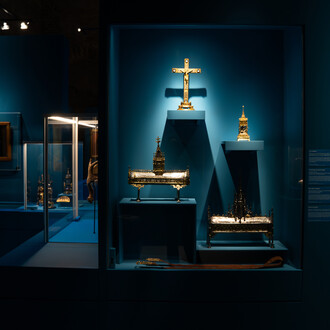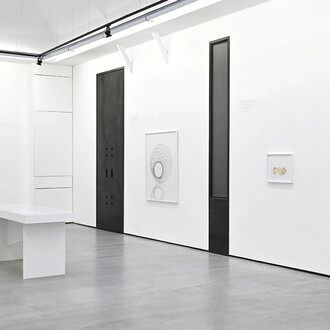A peaceful softness and delicate sensitivity coupled with expressive strength and powerful volumes are all distinctive features that make Swabian sculptures from the Late Middle Ages stand out at first glance. To best understand and feel this major art form of the Holy Roman Empire, the musée de Cluny will dedicate an exhibition open to the public from 1st April to 27 July 2015.
A former historic region of southern Germany situated between the Black Forest and Bavaria, Swabia was the scene of an abundant production of sculpted art between 1460 and 1530. It was ended by the shift in religious mentalities during the Protestant Reformation. Urban centres such as Ulm or Augsburg were home to an intense commercial and artistic activity. Artists developed virtuoso wood work and a refined knowledge of polychromy which combined their subtle effects.
A collaborative production
The close vicinity of small cities from southern Swabia (Memmingen, Kempten, Biberach...) with The Swiss and Austrian Alps allowed to meet the requirements of a sustained demand. Some workshops which were operated like true small businesses specialised in the export of retables to the very ends of Alpine valleys in the canton of Grisons (Swiss) or Alto Adige (now in Italy). Thanks to the circulation of artworks and men, this art combining sculpture and painting was able to please the public’s taste and to shine well beyond the borders of Swabia.
The exhibition throws light on several prominent sculptors such as Niclaus Weckmann and Daniel Mauch from Ulm as well as Ivo Strigel and his workshop and Lux Maurus or Jörg Lederer who were established in southern Swabian cities. The sculpted production in the workshop was organised collaboratively, as several craftsmen, companions and apprentices, took part in the creation of one artwork, from the conception to the colouring process. It was therefore a rare occurrence for the Master to singlehandedly produce one piece.
A rich and multifaceted art form
An itinerary through time and space introduces a selection of about thirty sculptures with an intense physical presence. Swabian sculptures were essentially religious works destined to furnishing churches. They are characterised by graceful feminine figures and refined drapery. They follow the fashion taste of the early 16th century.
The exhibition experience is enhanced by focuses on the technical and functional aspects of this art form. Visitors are invited to walk around the Saint Barbara of the musée Toulouse Lautrec in Albi to discover its hidden side and to get an insight into the carving techniques. The exhibition concludes with an evocation of the Parallelfaltensil, a style developed in Swabia which spread across Southern Germany. With its graphic networks of parallel pleats, it marks an aesthetic departure of which the Louvre’s Palmesel (palm donkey) is a notable example.
Together again
The exhibition is a unique opportunity to put back together ensembles which were dismembered for several centuries and disseminated in museums on both sides of the Rhine. The Louvre’s moving Christ in Prayer will exceptionally be reunited with the Two Sleeping Apostles from the Maximilianmuseum in Augsburg which were originally part of the same monumental group from the Mount of Olives.
The exhibition also highlights the richness of the French public collections as regards Swabian sculpture. Paradoxically enough, this art form which was highly sought after by French collectors from the late 19th to the early 20th century is largely unknown by today’s public. The exhibition allows to reconstitute a comprehensive overview of Swabian artistic diversity thanks to a core selection of sculptures from the musée de Cluny and important loans by the musée du Louvre, as well as works from a dozen French museums complete with loans granted by German and Austrian institutions.
Artistic expressions in Medieval Europe
An achievement as well as a starting point, the exhibition is part of a broader project of study, publication and promotion of Germanic sculptures in French museums, a meaningful and significant part of which originates from the rich Swabian production. It is a new milestone for the exhibition policy of the musée de Cluny, in favour of all the artistic expressions of Medieval Europe, particularly from Germany and the Holy Roman Empire, therefore affirming the museum’s European vocation.
The exhibition is organised by the musée de Cluny and the Réunion des musée nationaux Grand Palais.



















